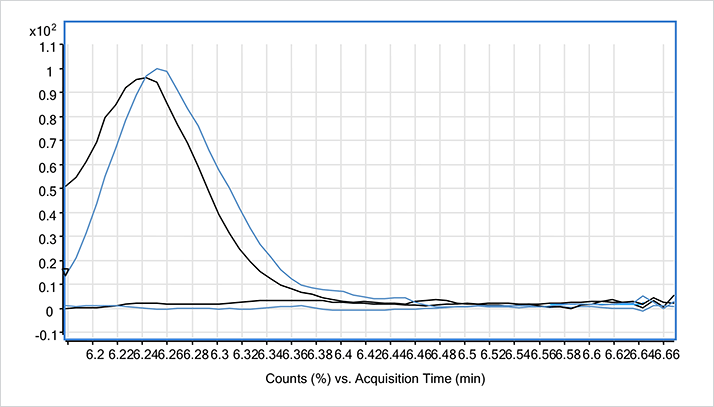Anastasia Khvataeva-Domanov1, Matias Kopperi2, Jevgeni Parshintsev2, Patrik Appelblad3 and Stephane Mabic1
1Millipore S.A.S., Lab Solutions, Lab Water, rue Jacques Monod, 78280 St.-Quentin-en-Yvelines, France
2University of Helsinki, Faculty of Science, Department of Chemistry, Laboratory of Analytical Chemistry, P.O. Box 55, 00014 University of Helsinki, Finland
3EMD Millipore, Lab Solutions, Advanced Analytics, Froesundaviks Alle 1, 169 03 Solna, Sweden
Hormones are examples of contaminants of emerging concern (CEC) that have been detected in environmental and drinking waters around the world in trace amounts (1, 2). Even at very low concentrations, CECs could potentially exert ecotoxicological effects (3). Liquid chromatography-mass spectrometry (LC-MS) is frequently used for trace hormone analysis to address concerns on environmental health and safety. These methods have very low detection limits, making it critical to avoid, or at least minimize, contamination during the experimental process. Indeed, components of the LC-MS instrument; the mass spectrometer (4); sample handling and manipulation (1); as well as the reagents and solvents used in the analyses, can all contribute to contamination issues. Water plays an important role in LC-MS, where it is used extensively in the workflow. It is essential that the detected analytes come from the samples, and not from the water used in various steps of the experiment (such as in the preparation of samples, standards, blanks, and eluents; or rinsing/flushing of the HPLC and MS systems).


To evaluate the risk of hormone detection in the blanks and its effect on analyses, androstenedione, androsterone, corticosterone, cortisone, estradiol, estrone, progesterone, OH-progesterone, and testosterone were analysed by standard addition method in potable water as well as in Milli-Q® water produced from potable water using Elix® + Milli-Q® Advantage A10 water purification systems (China and Spain) and a Milli-Q® Integral water purification system (France). 1-liter samples were enriched by SPE prior to LC-MS/MS and analyzed in triplicate using an Agilent 1290 Infinity® HPLC coupled to an Agilent® 6420 Triple Quadrupole LC-MS system (ESI+, MRM), and using a Purospher® STAR RP-18 endcapped (2 µm) Hibar® HR 50-2.1 column (EMD Millipore). Table 1 summarizes the results of the LC-MS/MS experiment. Of the three potable water samples analyzed, estradiol and androsterone were detected in potable water in laboratories in France and Spain, while corticosterone was detected in the potable water sample from the Chinese laboratory. Figure 1 shows the MRM chromatogram of estradiol.
Conclusion
Trace levels of hormones were detected in laboratory potable water samples using LC-MS/MS. After the potable water was purified using Milli-Q® water purification systems, the hormones were no longer detected. Milli-Q® water purification systems produce ultrapure water suitable for trace LC-MS analyses in environmental research.References
- M.J. Capdeville, and H. Budzinsk, TrAC Trend Anal Chem 30, 586–606 (2011).
- S.A., Snyder, E.C. Wert, H. Lei, P. Westerhoff, and Y. Yoon, Removal of EDCs and Pharmaceuticals in Drinking and Reuse Treatment Processes. (AWWA Research Foundation, 2007).
- C.J. Sinclair, W. Beinum, C. Adams, R. Bevan, L. Levy, S. Parsons, et al. Final Report for Drinking Water Inspectorate. York: Food and Environment Research Agency, (2010).
- M. Oehme, U. Berger, S. Brombacher, F. Kuhn, and S. Kolliker, TrAC Trend Anal Chem, 21, 322-331 (2002).
